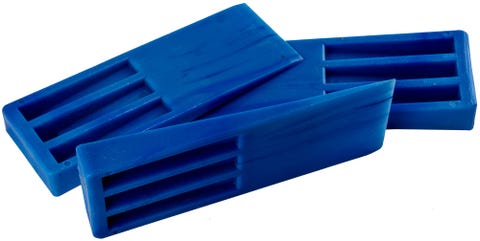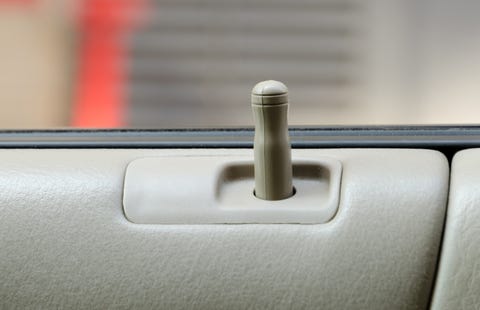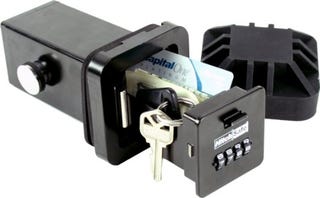How Much to Get Keys Out of Car
It happens to the best of us: You're frazzled and thinking about eight different things, but not about the moment at hand. Your keys are in the car, the doors are locked, and you have an appointment in ten minutes.
All is not lost. You may not make your appointment, but there are solutions.
As firefighters, one of the core principles we're taught is to solve the problem at hand while causing the least collateral damage possible. "Try before you pry" is one of the first lessons in any forcible entry class. It's catchy and memorable, but it also just works. The same principle applies to locking your keys in the car: Try the obvious solutions first, then work your way up to harder ones.
This content is imported from {embed-name}. You may be able to find the same content in another format, or you may be able to find more information, at their web site.
Emergencies
In the event of an emergency where a person or an animal is locked in the car, dial 911 immediately. If help doesn't arrive soon and you have to break the window, do so as safely as possible. Choose a window away from any occupants. If you have tape of any kind, use it to cover as much of the window as you can, as this will keep the glass somewhat together when it is broken. Safely remove as much glass as possible once the window is broken.
Obvious Solutions
When the situation is less urgent, the first things to try should be the ones with the highest potential for success and the lowest potential for damage.
First, check all the doors. While this may seem painfully obvious, it has worked for me on more than one occasion. A member of the public calls us for assistance, we arrive, we check the passenger door, and—thanks to a faulty driver's-side lock—gain access. People get tunnel vision when they're stressed and forget the obvious.
If that fails, call someone for assistance. If you're not too far from home, see if someone can bring a spare key. If you're farther away, call the local fire or police department as it may be a service they provide. If you are a member of a roadside assistance program such as AAA or Good Sam, or if you have similar benefits through your auto insurance, call them. It may not be the most expedient method, but a professional with the correct specialized tools is generally going to be worth the wait.
Forcible Entry
If you attempt all of the above options and are still locked out, forcing your way into the car might be your only hope. It would be good if you're near a hardware store during business hours, because you're going to need a few items. The kits we keep at the firehouse are simple: long metal rod, a few plastic wedges, and a flat air bladder with a bulb-style pump.
You may have also heard of the slim jim, but we no longer use those as they can damage the internal workings of a modern door and have a low likelihood of success. Instead, we often use a bladder and pump to push open the edge of a door to get to its lock, but here's how to replicate that method using items you can easily pick up at the store:
This content is imported from YouTube. You may be able to find the same content in another format, or you may be able to find more information, at their web site.
The metal rod you use should be rigid enough to stay stiff under pressure, but flexible enough to bend by hand. To reach into the car, you'll probably want to put a slight bend in the rod at its halfway mark. A thin threaded rod will work, as will a heavy coat hanger, but the latter isn't ideal as it will flex too much when trying to push certain things in the car.
There are two good options for the wedge: felling wedges or construction shims. The longer and thinner these are, the better. The best materials are nylon and plastic, the second best is wood, and at a distant last, metal. Insert the wedge by the top corner of one of the front doors, on the opposite side of the door from its hinges. Make sure this wedge is just a few inches either below or in front of the upper corner. Ideally, use two wedges: one below the corner and the other to the front.

David Hagerman
The idea is to create just enough space between the door and the pillar of the car to insert the rod without harming the paint or the structure of the car. Once the wedge(s) are in place, slide the rod into the opening. From here, there are a few ways to unlock the door.
The most obvious way is to push the unlock button. While this might seem like the easiest, sometimes it's easier to try and pull the interior door lever. If both methods fail and you can see the keys in the car, you can try to hook them and pull them out through the opening. Alternately, if you can reach the buttons on the keyfob, you can push the unlock button on the fob as well.
If the car is running, you can also try rolling down the window by pushing the window button. That seems obvious, but it is surprising how many times it's overlooked.
The Last Resort

Ari Grey / EyeEm
One other method to try if there is a vertical door lock involves tying a tightenable loop in the middle of a string and dropping it in between the door and the frame. Work the string into the door at the corner, flossing it back and forth to get it in between the weather stripping on the car and the door frame. Then move the two ends of the string down in a see-saw method until the loop is at lock height. Lasso the loop around the lock and pull it tight. Move both ends of the string back up to the 12-o'clock position, gently tug, and pop the lock up.
That being said, I have personally tried this method a few times and have never found much success. It really is a last resort.
Be Proactive
Ultimately, this is an easily avoidable problem. Having a spare key to your car doesn't take much effort, skill, or money. Some people zip tie a spare key in a secure, easily accessible location, but that may not always be an option if you worry about theft. If your vehicle has a trailer hitch, some products essentially turn the hitch into a small safe with room for a few keys.

HitchSafe HS7000T Key Vault
My confidence in magnetic key holders isn't great, especially in the northeast where the noble pothole is on every state crest. If you do use a magnetic key holder, consider a secondary means of securing it so you're not relying only on the magnet.
Perhaps the easiest solution is to stash a spare key in your wallet or purse, as you're more likely to take that with you when you leave the car. One Tesla owner even implanted her car's valet key in her skin, but that's a bit overkill. If you prefer to leave the spare key at home, make sure it's in an easily accessible location for others to grab, such as a key hook or an obvious dish.
Also, try not to lock your keys in the car.
Andrew Northshield Andrew Northshield is a professional firefighter, former Marine, as well as the son of a shop teacher who is still able to count to ten without removing a shoe.
This content is created and maintained by a third party, and imported onto this page to help users provide their email addresses. You may be able to find more information about this and similar content at piano.io
How Much to Get Keys Out of Car
Source: https://www.popularmechanics.com/cars/car-technology/a25589455/locked-keys-in-car/